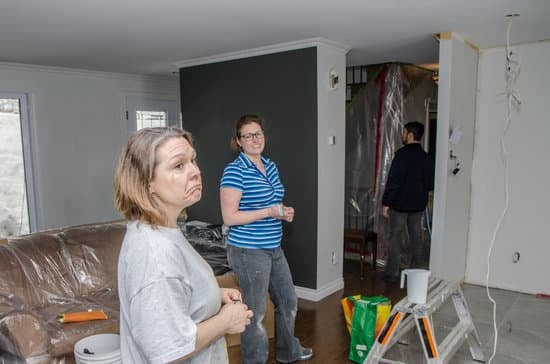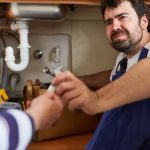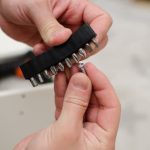How can energy efficiency be improved in homes? Energy efficiency is crucial for reducing environmental impact and lowering utility bills. Understanding what energy efficiency is and how it is measured, as well as the difference between energy efficiency and energy conservation, is essential. Conducting an energy audit to assess current energy usage is a good starting point to identify areas of inefficiency.
Proper insulation is key in improving energy efficiency, and upgrading insulation in different parts of the home can make a significant difference. Using energy-efficient appliances and LED lighting can also contribute to reducing energy consumption. Smart thermostats and home automation systems are effective tools for optimizing energy usage and reducing wastage.
Additionally, integrating renewable energy sources such as solar panels or wind turbines can further improve energy efficiency in homes. Making behavioral changes, such as adjusting the thermostat and unplugging electronics when not in use, can also lead to significant energy savings. These are just a few of the ways in which energy efficiency can be improved in homes, ultimately leading to a more sustainable future for all.
Understanding Energy Efficiency
Energy efficiency is a critical aspect of sustainable living and reducing our environmental impact, as well as saving on utility bills. Understanding what energy efficiency is and how it can be measured in homes is essential for making informed decisions about improving energy usage.
Energy efficiency in homes refers to the utilization of energy in a way that minimizes waste while maximizing performance and quality of living conditions. This involves using technology and practices that require less energy to perform the same tasks, ultimately leading to reduced energy consumption. Energy efficiency is typically measured through metrics such as the Energy Efficiency Ratio (EER) for appliances, the Home Energy Rating System (HERS) Index for overall home efficiency, and insulation R-values for measuring thermal resistance.
It’s important to note that energy efficiency differs from energy conservation, which involves simply using less energy. While both are important in reducing environmental impact and lowering utility bills, energy efficiency focuses on optimizing energy use without sacrificing comfort or convenience. By understanding this difference, homeowners can better prioritize their efforts in improving their home’s overall performance.
Tips for improving energy efficiency in homes:
- Conducting an energy audit to identify areas of inefficiency
- Upgrading insulation in walls, floors, and ceilings
- Using energy-efficient appliances and LED lighting
- Considering smart thermostats and home automation systems for optimized control
By focusing on these strategies, homeowners can make significant strides towards improving their home’s energy efficiency while maintaining a comfortable living environment.
Assessing Current Energy Usage
Conducting an energy audit is a crucial step in identifying areas of energy inefficiency in homes. By understanding how energy is being used and wasted, homeowners can take targeted actions to improve energy efficiency and reduce utility bills. There are several ways to conduct an energy audit, starting with a DIY assessment or hiring a professional to thoroughly assess the home.
One tip for conducting a DIY energy audit is to start with a walk-through of the home, identifying any drafts, air leaks, or areas of inadequate insulation. Checking for gaps around windows and doors, as well as inspecting the insulation in attics, basements, and crawl spaces can provide valuable insights into potential areas for improvement. Additionally, using a thermal leak detector or infrared thermometer can help pinpoint specific areas of heat loss.
For those who prefer a professional assessment, hiring an energy auditor can provide a more comprehensive evaluation of the home’s energy usage. Professional auditors use specialized equipment to identify air leaks, conduct blower door tests to measure air infiltration, and assess the efficiency of heating and cooling systems. This detailed analysis can uncover hidden sources of energy waste that may not be apparent during a DIY audit.
Ultimately, knowing where and how energy is being used in the home is the first step towards making meaningful improvements in energy efficiency. Whether through a DIY audit or with the help of professionals, understanding current energy usage is essential for implementing targeted measures to reduce consumption and lower utility costs.
Upgrading Insulation
Proper insulation is crucial for improving energy efficiency in homes. It helps to keep the indoor temperature consistent, reduce energy consumption, and lower utility bills. When a home is not properly insulated, it may require more energy to heat or cool the space, leading to unnecessary energy wastage and increased costs. In this section, we will discuss the importance of upgrading insulation and provide tips on how to do so in different parts of the home.
One of the key areas where insulation plays a critical role is in the attic. Without proper insulation in the attic, warm air can escape during the winter and enter during the summer, making it difficult to regulate indoor temperatures. To upgrade attic insulation, homeowners can consider using materials such as fiberglass or cellulose insulation. Additionally, sealing any air leaks in the attic can also contribute to improved energy efficiency.
Another important area to focus on when upgrading insulation is the walls of the home. Depending on the age and construction of the house, there are different options for adding or improving wall insulation. For example, homeowners can opt for blown-in insulation that can be injected into existing walls without major renovations. Additionally, exterior siding can be replaced with insulated siding to enhance energy efficiency.
When it comes to floors, especially in homes with basements or crawl spaces, proper insulation is essential for maintaining a comfortable indoor environment. By insulating floors with materials like foam board or spray foam insulation, homeowners can prevent cold air from seeping into living spaces and reduce heat loss.
By taking these steps to upgrade insulation in different parts of their homes, homeowners can significantly improve energy efficiency and reduce their environmental impact while saving money on utility bills.
- Consider using fiberglass or cellulose insulation
- Seal any air leaks in the attic
- Replace exterior siding with insulated siding
- Insulate floors with foam board or spray foam insulation
Energy-Efficient Appliances and Lighting
Energy-efficient appliances are designed to minimize energy waste during operation, using advanced technologies such as improved insulation, better temperature controls, and more efficient motors. The ENERGY STAR program, for example, certifies appliances that meet specific energy efficiency guidelines, helping consumers identify products that will save them money and reduce their environmental impact.
Similarly, LED lighting has become a popular choice for homeowners looking to improve energy efficiency. Compared to traditional incandescent bulbs, LED lights use significantly less energy and have a much longer lifespan. In fact, the U.S. Department of Energy estimates that residential LEDs use at least 75% less energy than incandescent lighting.
By investing in energy-efficient appliances and LED lighting, homeowners can make a tangible difference in their household’s energy consumption. Not only do these upgrades result in long-term cost savings, but they also contribute to a more sustainable lifestyle by reducing greenhouse gas emissions associated with electricity generation. When considering ways on how can energy efficiency be improved in homes, upgrading appliances and lighting should be at the top of the list.
| Energy-Efficient Appliances | LED Lighting |
|---|---|
| Minimize energy waste during operation | Use at least 75% less energy than incandescent lighting |
| Advanced technologies such as improved insulation | Much longer lifespan compared to traditional bulbs |
| Certified by programs like ENERGY STAR | Reduced greenhouse gas emissions from electricity usage |
Smart Thermostats and Home Automation
Understanding Smart Thermostats
Smart thermostats are an innovative solution for homeowners looking to improve energy efficiency. These devices are designed to learn the behavior and preferences of the household, adjusting temperature settings accordingly. They can also be controlled remotely through a smartphone app, allowing users to make changes even when they are away from home.
Optimizing Energy Usage
One of the key features of smart thermostats is their ability to optimize energy usage. By learning the patterns of occupancy and adjusting temperatures based on actual usage, these devices can significantly reduce energy wastage. For example, they can automatically lower heating or cooling when no one is at home and raise it just before someone returns, thereby reducing unnecessary energy consumption.
Home Automation Systems: Integrating Energy Efficiency
Automated Lighting and Appliances
In addition to smart thermostats, home automation systems offer a comprehensive approach to improving energy efficiency in homes. Through these systems, homeowners can automate lighting and control appliances, ensuring that lights are turned off when not needed and that devices are not left on standby mode when not in use.
Integration With Renewable Energy
Moreover, home automation systems can be integrated with renewable energy sources such as solar panels or wind turbines. This integration allows for better management of renewable energy production and consumption within the household, further optimizing energy usage and reducing reliance on traditional utility grids.
Renewable Energy Options
Solar Panels
One of the most popular and effective ways to improve energy efficiency in homes is by integrating solar panels. Solar panels harness the power of the sun to generate electricity, reducing reliance on traditional utility grids.
By installing solar panels on the roof or in the yard, homeowners can significantly decrease their energy consumption and lower their electricity bills. In addition to providing a sustainable energy source, solar panels also contribute to reducing greenhouse gas emissions, making them an environmentally friendly option for improving energy efficiency in homes.
Wind Turbines
Another renewable energy option for improving energy efficiency in homes is the installation of wind turbines. While solar panels are more commonly used in residential settings, wind turbines can be a viable option for properties with ample space and sufficient wind conditions.
Wind turbines harness the power of wind to generate electricity, thereby reducing reliance on non-renewable energy sources. While the upfront cost of installing wind turbines may be higher than other energy-efficient options, they can provide long-term benefits in terms of reduced energy expenses and environmental impact.
Hybrid Systems
For homeowners looking to maximize their energy efficiency through renewable sources, hybrid systems that combine solar panels and wind turbines can be a compelling option. By leveraging both solar and wind power, hybrid systems offer a more dependable and consistent source of renewable energy, especially in areas with varying weather conditions.
These systems not only enhance sustainability but also provide greater independence from traditional utility grids. With ongoing advancements in renewable energy technology, hybrid systems are becoming increasingly accessible and cost-effective for homeowners seeking to improve their home’s energy efficiency.
By exploring these renewable energy options, homeowners can take significant steps towards reducing their carbon footprint while enjoying long-term cost savings on utility bills. Integrating solar panels or wind turbines into residential properties represents a proactive approach to enhancing overall energy efficiency within homes while contributing positively to environmental conservation efforts.
Overall, integrating renewable energy sources such as solar panels or wind turbines is an effective way to improve home efficiency by reducing reliance on non-renewable resources and decreasing carbon footprint.
Behavioral Changes for Energy Efficiency
Making behavioral changes in the way we use energy at home is a simple yet impactful way to improve energy efficiency and reduce utility bills. One of the most effective ways to achieve this is by adjusting the thermostat. In the winter, lowering the thermostat by just 1 degree Fahrenheit can result in a 3% reduction in heating costs.
Similarly, in the summer, raising the thermostat can lead to savings on cooling costs. Additionally, using a programmable thermostat can help automate temperature adjustments according to your schedule, ensuring that you’re not wasting energy when no one is at home.
Another important behavioral change is unplugging electronics when they are not in use. Many electronic devices continue to consume energy even when turned off or on standby mode. This phenomenon, known as “phantom load” or “vampire power,” can account for a significant portion of a household’s energy consumption. By simply unplugging devices or using power strips that can be switched off when not in use, you can eliminate this unnecessary energy usage.
Furthermore, making conscious decisions to minimize water and electricity usage throughout your daily routine can also contribute to improved energy efficiency in homes. Simple habits such as taking shorter showers, using natural light whenever possible instead of turning on lights, and turning off appliances and electronics completely instead of leaving them on standby mode can add up to substantial energy savings over time.
By implementing these behavior changes into everyday life, households can make significant strides towards reducing their environmental impact while simultaneously saving money on their utility bills.
| Energy-Saving Behavior | Impact |
|---|---|
| Adjusting the thermostat | 3% reduction in heating costs per 1 degree Fahrenheit adjustment |
| Unplugging electronics | Elimination of “phantom load” or “vampire power” for those devices |
| Minimizing water and electricity usage | Substantial long-term energy savings through conscious daily habits |
Conclusion
In conclusion, it is clear that energy efficiency plays a crucial role in both reducing utility bills and minimizing the environmental impact of a household. By understanding what energy efficiency is and how it can be measured, homeowners can take proactive steps to assess their current energy usage through an energy audit. This will help identify specific areas for improvement to increase energy efficiency in homes.
Upgrading insulation, using energy-efficient appliances and LED lighting, implementing smart thermostats and home automation, and considering renewable energy options are all practical ways to improve energy efficiency in homes. These measures not only contribute to reducing overall energy consumption but also promote sustainability by relying on cleaner and more renewable sources of power.
Furthermore, it is important for individuals to embrace simple behavioral changes that can lead to significant energy savings. Adjusting the thermostat, unplugging electronics when not in use, and being mindful of water usage are all small yet impactful adjustments that can contribute to improving overall energy efficiency within a home. By collectively adopting these strategies, households can make a substantial difference in conserving energy and achieving a sustainable future.
Frequently Asked Questions
How Can Energy Efficiency Be Improved?
Energy efficiency can be improved by implementing technological advances such as energy-efficient appliances, LED lighting, and smart thermostats. Additionally, improving insulation and sealing air leaks in buildings can also significantly enhance energy efficiency.
What Are 5 Ways to Improve Energy Efficiency in Existing Buildings?
Five ways to improve energy efficiency in existing buildings include conducting energy audits to identify areas for improvement, upgrading to ENERGY STAR-rated appliances, investing in high-efficiency HVAC systems, installing programmable thermostats, and using renewable energy sources like solar panels.
How Can We Reduce Energy Consumption at Home?
There are several ways to reduce energy consumption at home. These include using energy-efficient appliances, sealing drafts around windows and doors, adjusting thermostat settings to conserve energy, unplugging electronics when not in use, and using natural lighting whenever possible. Additionally, choosing renewable energy options can also contribute to reducing overall energy consumption at home.

I’m thrilled to have you here as a part of the Remodeling Top community. This is where my journey as an architect and remodeling enthusiast intersects with your passion for transforming houses into dream homes.





